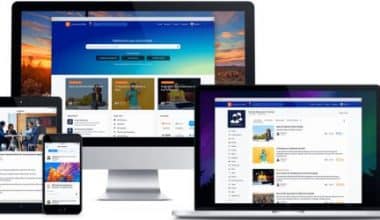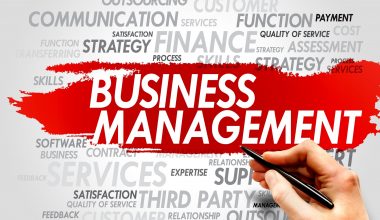It is common knowledge that recruiters are inundated with resumes to the point where they are increasingly reliant on applicant tracking software. While the fundamentals of writing a resume have not changed, it is important to create a resume that is technologically up-to-date. Here, we’ll look at the best practices for writing a resume, taking into consideration the fonts and the objectives.
Resume Best Practices
While creating a resume that will pass AI bots and get you noticed by hiring managers may appear simple, here are several important factors to consider.
#1. The ideal resume format
It is well known that in a highly competitive US job market, 98% of Fortune 500 companies use AI-based software to review the flood of applications. As a result, 75% of resumes submitted are never seen by hiring managers.
There are several factors to consider when “beating the bots,” so let’s start with the basics: your preferred format.
While all resumes should include contact information, a summary statement, skills, professional experience, education, and other pertinent information, the format can vary.
Consider your professional background, including the type of position you want to apply for, before deciding on a resume format. When deciding how to create the ideal resume, the three most common formats are:
Formats for chronological resumes
- A resume in reverse chronological order, beginning with your most recent position
- Ideal if you have a consistent work history.
- Not ideal if you have several job gaps or want to change industries.
Formats for functional resumes
- Concentrated on transferable skills and accomplishments relevant to a specific role.
- Ideal if you have several gaps in your employment history or want to change careers.
- Formats for combination/hybrid resumes
- This resume format is a hybrid of functional and chronological resume formats.
- It emphasizes your professional experience as well as your transferable skills.
#2. How should my resume look?
Now that you’ve hopefully decided on a format, let’s take a closer look at how to create your ideal resume.
While font selection is a personal choice, stick to the standard, AI-friendly fonts such as Calibri, Arial, Times New Roman, Garamond, or Helvetica in size 11.
Maintain consistency by using the same format throughout your resume. For example, all bullet points should have a period in the end, unless you prefer not to.
Excessively quantify – back up your accomplishments with numerical or percentage-based supporting data. So instead of saying: “I reduced operational expenditure year on year, say: reduced operational expenditure with 60% year on year.
Include in your resume if you received a performance bonus for a job well done or worked closely with a well-known senior executive.
Creativity – the level of creativity should be determined by the industry in which you work. While creative resume layouts are excellent for designers, they are not appropriate for more traditional roles. They are also not AI-compliant resumes.
Job requirements – If you are preparing your resume for multiple job applications, concentrate on your transferrable skills or carefully read a job description and include keywords or relevant phrases in your resume.
#3. Five things to avoid if you want to write the best resume possible
When you begin to put together your resume, keep a few things in mind.
The following are the top five resume mistakes to avoid:
Spelling and grammatical errors – Many recruiters will reject resumes that contain spelling or grammatical errors. So, check your spelling and have a friend proofread it. To avoid errors, you can also use plain language.
Past/future tense – Use the past tense when referring to a previous job (directed, organized, managed). Use the present tense for a current role (directing, organizing, managing).
First-person pronouns – at all costs, avoid using words like me or I. Say “directed a team of 500 consultants” instead of “I directed a team of 500 consultants.”
Photos, colored words, bold text, underlining, charts, tables, and custom bullets (circular/square bullets are acceptable) should be avoided because applicant tracking software cannot read them.
Headers and footers – Because AI bots can’t read the information in headers and footers include important contact information in the body of your resume.
#4. What should my resume include?
All effective resumes are organized in the same way, making them easier to navigate for recruiters.
Always include the following information:
- Contact information
- A link to your LinkedIn profile
- A resume/job summary
- Your work experience
- Key transferable skills in education
- Include the following information:
- A professional development section with information on courses, projects, and business coaching.
- Links to publications and portfolios
#5. The ideal resume length
There has been much discussion about the ideal length, but it is not a simple matter.
Less than five years: a one-pager with all relevant information will suffice.
Seasoned professionals should use a 2-page resume with a brief, high-level career overview.
#6. What information should not be included on my resume?
Avoid including all of your previous work in your resume if it is unrelated to the job or industry in which you wish to work.
Unless a recruiter specifically requests it at the start of a hiring process, avoid using your valuable resume “retail space” to list your references.
How Should I Describe My Work Experience On A Resume?
The work experience section of your resume is the most important, as most recruiters look for it.
If you are an experienced professional, limit your work experience section to the last 10-15 years. The only exception to this unspoken rule is for senior executives who have a lengthy resume that demonstrates their wealth of experience.
Bullet points: To keep your resume concise, limit the number of respective work experience descriptive bullet points to six per engagement.
Career gaps: Include a brief explanation in your work experience section if you have any significant career gaps.
What Should I do Before Submitting My Updated Resume?
Your resume should now look fantastic! To ensure success, however, before submitting your resume to a hiring manager, follow these steps.
#1. Check your resume for spelling and grammatical errors from the last page to the first (a tried and tested proofreading tip).
#2. Check to see if your resume is AI Bot compliant by saving a version of your resume in plain text file format.
#3. While PDF formats are ideal for preserving the layout of your resume, if you are applying to a Fortune 500 company, use a Word file format instead. If you can submit your resume in PDF format, by all means do so!
#4. Always name your submitted resume in the following format: Name, Surname, Resume, and Date.
Objectives on a Resume
A resume objective (also known as a career objective, job objective, or employment objective) is a great way for a recruiter or hiring manager to quickly see a snapshot of your skills and experience, which can help you stand out from other candidates during the initial resume scan.
It also includes additional key search terms that will assist automated resume screening programs in finding you and flagging you as a potential hire.
The Basic Components of a Good Resume Objective Statement
A good resume objective communicates three types of information.
The first is who you are, which is typically a statement of your current job title as well as any relevant skills, education, or certifications.
The second part is a statement about what you will bring to the company that is valuable, such as your years of experience or specific training.
The third section is a statement about how you will help the company achieve its goals by utilizing your unique skills.
This isn’t a rigid structure, but understanding these components can help you write an effective career objective for your resume. This is the format that many of the upcoming resume objective examples will use.
Important Considerations When Writing Your Objective Statement
- Make your objective relevant to the job/career/industry you’re applying for. This means that you should create a unique resume for each application.
- Describe how you will benefit the company, not just how qualified you are.
- When possible, use specific facts/numbers/details rather than bragging or generalizing.
- Maintain simplicity. Don’t use flowery or expansive language because it can make you appear arrogant. Make it as simple for a recruiter to see you as a qualified candidate as possible.
Reviewing the job description will provide you with the information you need to tailor your resume objective to the job and company.
With this in mind, here are some good examples to help you create your own great career objective.
Objectives For a Resume for a New Job Seeker
You may not have a lot of experience, but writing a good resume objective will help you stand out from the crowd in the eyes of a recruiter.
Because you cannot provide specific work experience or accomplishments, the trick here is to emphasize your strongest personal skills and characteristics, as well as any educational successes.
Here is an example:
“Recent graduate with a B.A. in Accounting looking to start their career in Finance at [company name]. Extensive experience in creating annual reports and analyzing financial statements for a variety of university activities. Seeking to combine my theoretical knowledge with practical experience in order to assist [company name] in maintaining their strong market presence.”
Resume Objective for Those Seeking a Career Change
Your goal here is to clearly demonstrate how your previous job skills and experience can be useful in your new position. Do this by mentioning your relevant talents and knowledge to the new job, as well as how your previous career background will help you succeed/excel in the role.
Here’s an example:
“Customer service representative with over four years of experience in accounting technical support seeking a position as a Staff Accountant with [company name]. Proven track record of customer satisfaction while solving complex technical and accounting issues remotely.”
For more templates to help you write a good resume, click here.
Top Resume Fonts
When you only have six seconds to demonstrate your qualifications for a job, every detail counts, including the font you use. What are the best resume fonts for passing the six-second scan then? Her’s what you should know
The Most Suitable Fonts for Your Resume
When choosing a font, the most important factors to consider are professionalism, design, spacing, and, most importantly, readability.
Furthermore, many businesses use an ATS (applicant tracking system) to streamline the recruiting process, which may cause issues if the system doesn’t recognize your font. So, if your resume font is too unique or unusual, it’s time to switch it up.
Here are the best fonts you can use for your resume:
#1. Arial
This sans-serif font is frequently used for branding and website or mobile design, making it an excellent choice if you work in the creative field or are applying for a marketing position.
#2. Georgia
Georgia is a slightly wider version of the Times New Roman font. It is also easier to read for many people, which is why The New York Times uses it as its primary font.
#3. Helvetica font
Helvetica is considered more elegant and modern. If you want to add some flair to your resume while maintaining the same level of professionalism as some of the traditional fonts, use this font.
#4. Tahoma
Tahoma has a technical feel and a narrower body structure than some of the other fonts on this list, making it an ideal choice for those in the software engineering field.
#5. Times New Roman
Times New Roman is a traditional, classic, and easily recognizable font that is still used today.
#6. Trebuchet MS
Trebuchet MS has a thicker appearance, but its rounded san-serif typeface is ideal for entry-level job seekers who need to fill a single page with their experience, skills, and accomplishments.
#7. Verdana
Do you need to add more text to your resume? Choose Verdana because it was created to be easy to read in small print on computer screens.
Font Size For Your Resume
Hiring managers will have to squint to read your resume if the font is too small. If it is too large, your resume will appear bulky and will be longer than necessary.
Here are three general rules for font sizes and formatting to avoid making mistakes:
- Your first name (at the top): from 18 to 24 points
- 12 to 16 point headings
- 10 to 12 points for the body
You can always change the font size to change the length of your resume. For example, if your resume is 1.5 pages long when using 10-point font, consider increasing the font size to 12 points to bring it closer to a full two pages.
Of course, your experience and skills will ultimately win over employers. However, using a clear font in an appropriate size will increase your chances of receiving the time and attention your resume deserves.
What Does A Resume Mean?
A resume is a formal document created by a job applicant to list their qualifications for a position.
Is A Resume A CV?
A resume is different from a CV. Because the CV provides a comprehensive history of your academic credentials, the length of the document varies. A resume, on the other hand, presents a concise picture of your skills and qualifications for a specific position, so the length is typically shorter and dictated by years of experience.
In Conclusion
While the job market has become more competitive, and artificial intelligence (AI) can determine our fate in the recruitment process, following resume best practices is critical to your future success. The guidelines we have listed in this article will help you to achieve just that.
Related Articles
- FAKE RESUME: How To Generate Fake Resume
- HOW TO MAKE A GOOD RESUME: Tips on Writing an Effective Resume
- 10 BEST-SELLING DIGITAL PRODUCTS IN 2023
- 53+ Hard Skills And How To Highlight Them On A Resume
- RESUME WRITING: What It Should Look Like and Easy Guide to Make One






